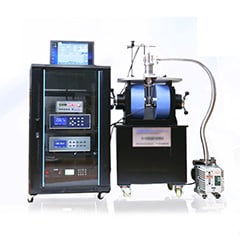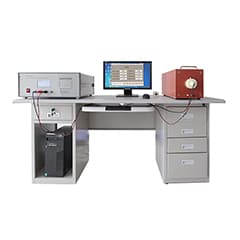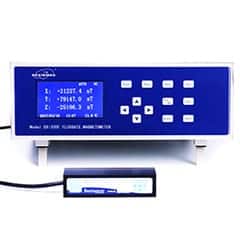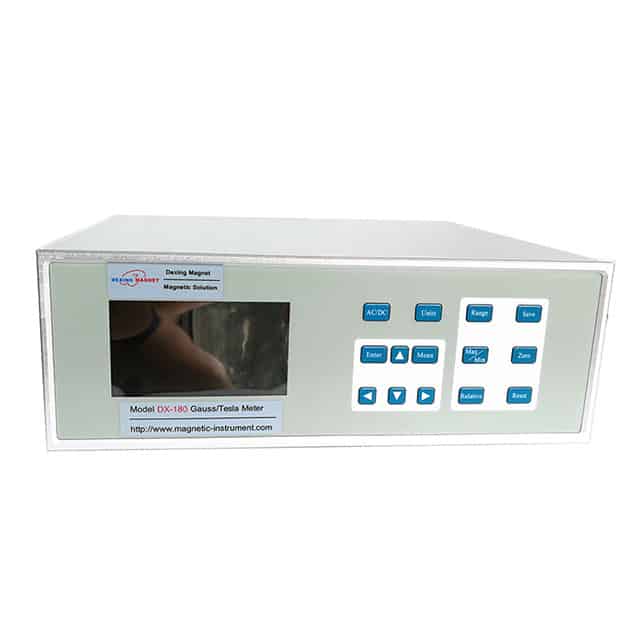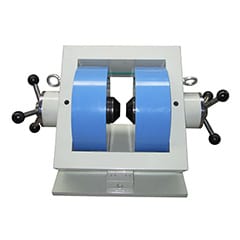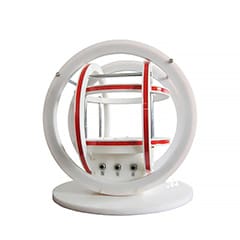products categories
contact us
- If you have questions, please contact us, all questions will be answered
- Tel : 18030236818
- Fax : +86-592 5237901
- Email : dexing@china-dexing.com
Hall Effect Measurement System
Basic characteristics and common magnetic parameters of soft magnetic core materials
First, the basic characteristics of magnetic materials
1, magnetization curve of magnetic materials
Magnetic core material is composed of ferromagnetic material or ferromagnetic material, under the action of external magnetic field H, there must be the corresponding magnetization intensity M or magnetic induction intensity B, their change curve with the magnetic field intensity H is called magnetization curve (M ~ H or B ~ H curve). Generally speaking, the magnetization curve is nonlinear and has two characteristics: saturation phenomenon and hysteresis phenomenon. That is, when the magnetic field intensity H is large enough, the magnetization intensity M reaches a certain saturation value Ms, and continues to increase H, Ms remains unchanged; In addition, when the M value of the material reaches saturation and the external magnetic field H decreases to zero, M does not return to zero, but changes along the MS-MR curve. The working state of the material corresponds to a point on the M ~ H curve or B ~ H curve, which is often called the working point.
Common magnetic parameters of soft magnetic materials
Saturated magnetic induction intensity BS: its size depends on the composition of the material, and its corresponding physical state is the orderly arrangement of magnetization vectors inside the material.
Remaining magnetic induction intensity Br: is the characteristic parameter on the hysteresis loop line, and B value when H returns to 0.
Rectangular ratio: BR/BS
Coercivity Hc: a measure of how easily a material can be magnetized, depending on its composition and defects (impurities, stresses, etc.).
Permeability μ : is the ratio of B and H corresponding to any point on the hysteresis loop line, which is closely related to the working state of the device.
Initial permeability μ I, maximum permeability μ M, differential permeability μ D, amplitude permeability μ A, effective permeability μ E, pulse permeability μ P.
Curie temperature Tc: The magnetization intensity of ferromagnetic material decreases with the increase of temperature. When it reaches a certain temperature, spontaneous magnetization disappears and turns into paramagnetism. The critical temperature is Curie temperature. It determines the upper limit of the operating temperature of the magnetic device.
Loss P: Hysteresis loss Ph and eddy current loss Pe P = Ph + Pe = AF + Bf2 + C Pe ∝ F2 T2 /, ρ decreased,
The method of hysteresis loss pH is to reduce the coercivity Hc; The method of reducing eddy current loss PE is to reduce the thickness of magnetic material T and increase the resistivity of material ρ. The relationship between the loss of magnetic core and the temperature rise of magnetic core in free static air is:
Total power dissipation (mW)/surface area (cm2)
Loss P: Hysteresis loss pH and eddy current loss Pe. The method to reduce hysteresis loss pH is to reduce coerces Hc. The method of reducing eddy current loss PE is to reduce the thickness of magnetic material T and increase the resistivity of material R. The relationship between core loss and core temperature rise in free still air is as follows: total power dissipation (milliwatt)/surface area (square centimeter).
3. Conversion between magnetic parameters of soft magnetic materials and electrical parameters of devices
When designing soft magnetic devices, the voltage and current characteristics of the devices must be determined according to the requirements of the circuit. The voltage and current characteristics of devices are closely related to the magnetic core geometry and magnetization state. The designer must be familiar with the magnetization process of the material and the conversion relationship between the magnetic parameters of the material and the electrical parameters of the device. The design of soft magnetic devices usually includes three steps: the correct selection of magnetic materials, reasonable determination of the magnetic core geometry and size, according to the magnetic parameter requirements, the simulation of the working state of the magnetic core to get the corresponding electrical parameters.






